Japan has been firmly established as a whisky producing nation for many decades and, with new distilleries cropping up all over the world, it is now seen as one of the old guard.
Much like traditional whisky producing nations Scotland, Ireland and America it has built a history that includes celebrated producers, big businesses, cheap imitators and distillery closures, and it has expanded to produce a wide range of styles.
In this piece we’ve picked out some Japanese whisky highlights that include products from some of those artisan distillers and big businesses, and even a closed distillery. But before we study those whiskies in detail, we still need to deal with the doubters and answer their oft-repeated question…
The answer is firmly, undeniably, YES. When it comes to handing out ‘world’s best whisky’ awards, winner’s certificates regularly make their way to Japanese distillery walls.
Few blends have picked up as many top gongs as Suntory’s Hibiki range, and major player Nikka, along with other producers, have been similarly inundated with accolades for a range of whiskies over the years.
The first whiskies produced in Japan were made along similar lines to Scotch, but over the years the country’s output has evolved to appeal more to its own market by reflecting Japanese tastes. In turn, these unique whiskies have become much sought out around the world.
For a truly Japanese tasting whisky, look for a spirit that has been aged in Japanese Oak, known as Mizunara, that produces a taste often compared to coconut. It’s hard to work with, but Japan’s whisky makers have perfected the craft and it is now used by several distilleries.
Japan is also noted for its blended whisky. Seen as an art form in Japan, the best whisky blenders are highly respected individuals. Often they will use a variety of whiskies to subtly build up layers of flavour, tending to favour delicacy and balance ahead of big, bold sipping experiences, to create a style that is distinctly Japanese.
There’s a mystique to many Japanese whisky distilleries that generates a cult following and can bump up prices to eye watering levels. Arguably no distillery has a greater cult status than Karuizawa. The distillery was founded in 1955 on the slopes of an active volcano, Mount Asama, and was the smallest in Japan. The misty mountain air and high summer humidity combined to create unique conditions for whisky making, resulting in concentrated flavours and a high alcohol content.
In 2001 the distillery closed, and news spread around the world of this mystical mountain distillery with a diminishing volume of exceptional whisky. It quickly became a ‘must buy’ for collectors, sending prices rocketing. Although no new whisky is made at the distillery, its stocks are carefully managed, resulting in a steady trickle of releases.
High prices are a theme of many Japanese whiskies when compared to similar products from other established nations. But, as this list shows, there’s still plenty of affordable bottles to choose from. So whether you want to experience the unique flavours of Mizunara oak, try out a distinctively Japanese blend or simply find the perfect base for a Japanese highball cocktail then there’s something out there for you…
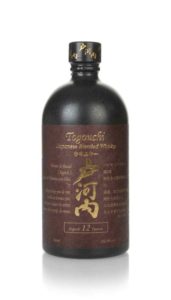
Best entry level Japanese whisky
Tasting notes: Orchard fruit freshness with dry spice and subtle smoke at the finish
4/5
If you’re looking for a Japanese whisky with a full spectrum of flavours and some good age to it then Togouchi’s 12 year offers decent value. It’s made at the Chugoku Jozo distillery and, rather unusually for a whisky, is aged in a tunnel, in the town of Togouchi.
It’s a blend that includes a touch of peated whisky to give it the merest hint of smoke. The gentle smoky peat notes mingle with some fragrant spices which become dry and peppery towards the finish, while there are orchard fruit flavours that contribute towards its overall fresh and light touch. If you’re keen to discover how Japanese whisky carefully balances its flavours, including a subtle use of peat, then this blend would be a good place to start.
BUY HERE: Togouchi 12 Year Old Japanese Whisky, 40%
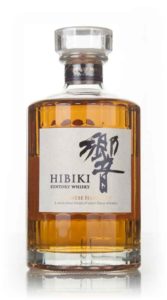
Best blended Japanese Whisky
5/5
Tasting notes: Soft fruit and spice with light floral notes and drier toasted oak
If you want to get your hands on an archetypical Japanese blended whisky then Suntory’s Hibiki is well worth investigating. It contains whisky from three of Suntory’s distilleries – malt from Yamazaki and Hakushu, and grain whisky from Chita.
Hibiki translates as ‘harmony’ and the blender’s aim is to use those various whiskies to create something harmonious on the palate, and we think it achieves this brilliantly. Spend some time taking in its aroma and you’ll begin to appreciate the various elements coming together, with fruits, spices, floral and woody notes all present.
Those various layers continue to play on the palate, with a drizzle of honey sweeting things up and contrasting nicely with some drier spices and toasted oak that linger at the finish. It’s the perfect introduction to the Japanese blender’s art.
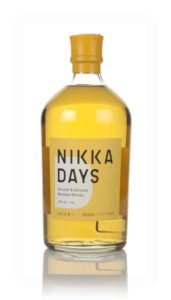
Best for Japanese whisky under £50
Tasting notes: Zesty lemon, toasty grains and a hint of smoke
4/5
Japanese whisky tends to be a bit more expensive than whisky from elsewhere in the world, so finding a bottle on a budget isn’t easy. Nikka Days is a good choice if you want to try out a Japanese whisky without breaking the bank, with its bright and cheerful character typical of the country’s output.
It’s a blend of malt and grain whisky from Nikka’s Miyagikyo and Yoichi distilleries and contains plenty of fruit and toasty grain flavours with a hint of smoke thrown in for good measure. Within the fruits we think zesty lemon is the most detectable, while some toffee sweetness adds to its overall smooth nature. It’s best suited to some Japanese highball cocktails, but it’s decent enough to enjoy neat too.
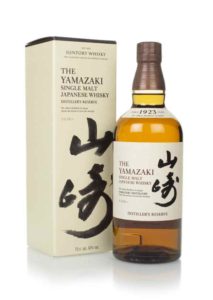
Best for Japanese single malt whisky
4.5/5
Tasting notes: Floral, woodland flavours with fruity cherry and some coconut
As with most Japanese whisky, price tags tend to be a little on the high side, so finding a top notch single malt on a budget isn’t easy. This bottle from The Yamakazi might be considered pricey for a no age statement release, but it’s considerably less than aged Japanese whisky of a similar quality and, thanks to some of the whisky used coming from mizunara oak casks, it’s very much Japanese in taste.
There’s a woodland feel to both aroma and flavour, with floral, oak and even slightly fungal notes present, along with some fruitier hits of cherry. It’s a complex whisky – keep sipping slowly and you might even detect some coconut, which is typical of mizunara whiskies – and it has a mellow depth that will make you want to savour every drop.
BUY HERE Suntory, The Yamakazi Distiller’s Reserve, 43%

Best budget Japanese whisky
4/5
Tasting notes: Floral, citrus, ginger and vanilla
We were quite surprised to discover that Aldi stocked its own brand of Japanese whisky, with an extremely low price tag that’s typical of the retailer. The label states it’s a ‘world whisky matured and blended in Japan’ (it’s allowed for Japanese whisky to be distilled elsewhere before being blended) and, to stamp its Japanese authenticity, it has been finished in Mizunara casks.
It has a range of characteristics you would associate with more expensive Japanese blends, including a floral bouquet, citrus juiciness, ginger and vanilla spice, along with some oak and almond depth. It’s a perfectly decent drop and distinctively Japanese.
BUY HERE Aldi Kyasuku Japanese Whisky, 40%
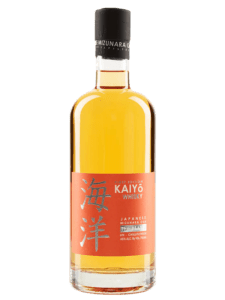
Best for Japanese peated whisky
5/5
Tasting notes: Delicate smoke, zesty fruit and incense
Kaiyo is a Japanese distillery with an unusual method of maturing their whisky. Having rested in hand made mizunara oak casks on land, they are then packed off to Osaka and sent out to sea for up to three months. This nautical trip rocks the whisky, enabling it to have a more complete interaction with the wood, while the constant change in climate and salty sea air also subtly alter its characteristics.
Whatever mysterious magic this sea adventure conjures up seems to work a treat in their lightly peated whisky, where delicate, sweet vanilla and soft smoke merge with zesty citrus flavours and a honeyed sweetness. There are also fresh touches of berries and a dry oak that seems to catch the flow of the smoke like incense and drift with a dusty dryness that lingers for an age. A deliciously unique peated whisky.
BUY HERE Kaiyo Mizunara Oak Peated, 46%
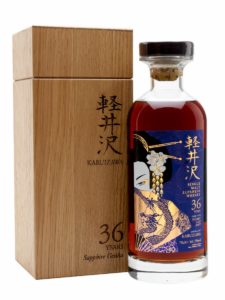
Best for whisky collectors
5/5
Tasting notes: Dried fruit, leather, liquorice, brown sugar sweetness
Despite a price tag few can afford, this bottle of Japanese whisky might not be available for long. With the Karuizawa distillery having closed in 2001, the volume of whisky it produced is decreasing, and carefully managed stocks are only occasionally brought to the market.
At this price, we’ve been unable to afford a bottle, so we’ll rely on tasting notes from The Whisky Exchange instead, who have the honour of selling the whisky, bottled by Elixir Distilleries, and with the beautiful label artwork produced by their creative director, Raj Chavda. On the nose they describe “Rich dried fruit, sweet leather and mushroomy earthiness”, with a palate of, among other things, “chocolate-covered liquorice… spicy leaves… cinnamon heat… pineapple, mango, apple and pear… hints of tar… and brown sugar sweetness.”
If that all sounds tempting, and you’ve got a few thousand spare, then we suggest you get your order in quick.
BUY HERE Karuizawa 36 Year Old, Sapphire Geisha, 61.2%
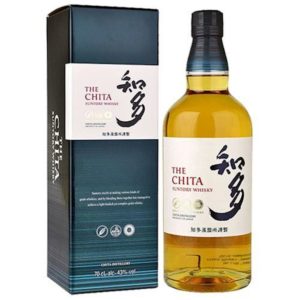
Best for cocktails
Tasting notes: Elegant shades of vanilla, herbs, floral notes and prickly spice
4/5
When it comes to making an authentic Japanese highball, attention to detail is all important: everything needs to be just right. The right glass, the right whisky, the right soda and even the right kind of ice. For the whisky, you can’t go wrong with The Chita from Suntory.
It’s a grain whisky that features a high proportion of corn. This lends it a natural sweetness and allows the flavours extracted from Bordeaux, Spanish oak and American oak casks to mingle with a degree of elegance. Vanilla ice cream and some floral and herbal notes are all present, while some prickly spice helps give a bit of substance to your highball – without spoiling its elegant nature.
BUY HERE The Chita Single Grain Whisky, 43%
Best whisky glasses: from crystal to tumblers, budget to Glencairn, from Amazon to ASDA
9 of the best Scottish whiskies: our favourite Scotch brands
Best Islay whisky: from Ardbeg to Laphroaig, the Islay whiskies you need to try
Best rye whiskey: ideal rye for a Sazerac, Manhattan, or simply neat
Best peated whisky: from Speyside to Islay, the peaty whiskies to please
8 of the best single malt whiskies
Best expensive whiskies worth the price tag: Macallan, Glengoyne, Tobermory, Glenfiddich
Best supermarket whiskies: best whisky buys from Lidl, Aldi, Morrisons and Tescos
Best blended whiskies: is it worth buying blended whisky? The best brands
Best world whiskies: from cheap to expensive, the world whisky brands you have to try
Best Irish whiskey: from cheap to expensive, single malt, blends, and smoky
Best Speyside whiskies: from single malt to blended, M&S to Glenfiddich
Best English whiskies: the English whisky brands worth buying
Best whiskies under £50: cheap whisky that tastes expensive
This article contains affiliate links. We may earn a small commission on items purchased through this article, but it does not affect our editorial judgement.